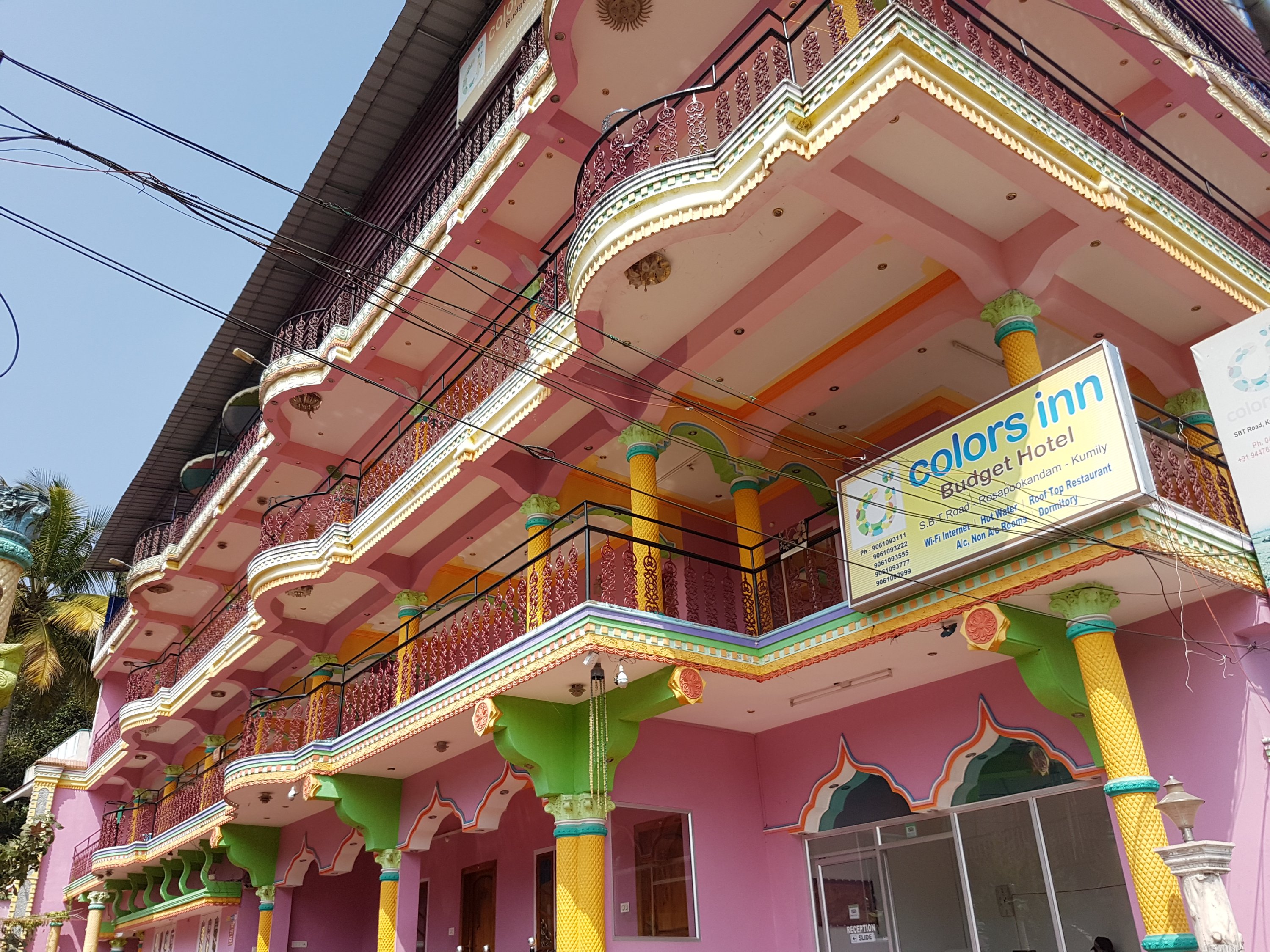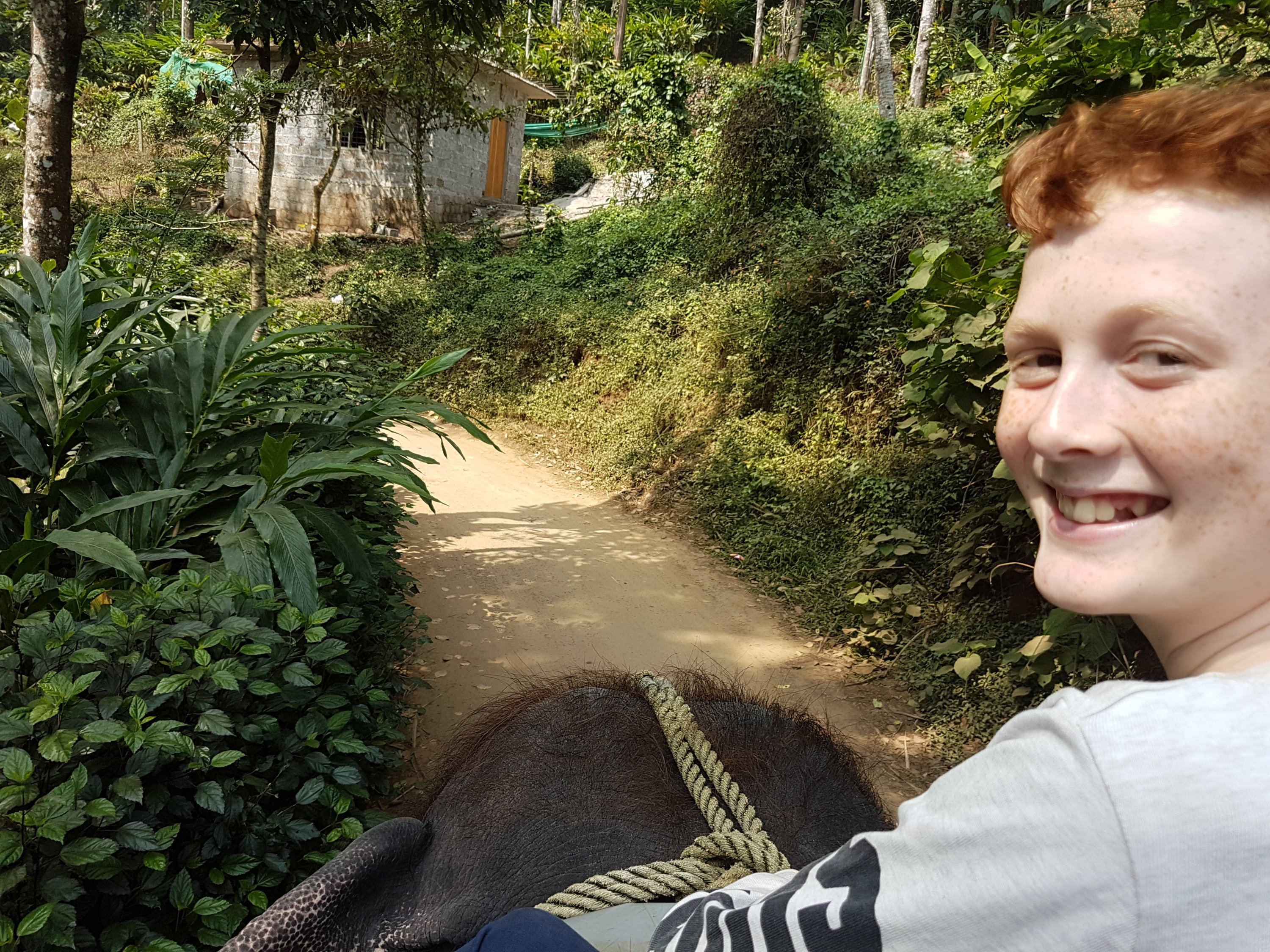
We saw an elephant on temple duty in Hampi, one out of the window of a coach as we drove through a wildlife reserve, three in a zoo in Mysore and one, chained across its ankles, leading the carnival in Kochi. Surely they’re everywhere, someone asked. The truth is that elephants, typical of mega-fauna the world over, are seldom where you want them to be and often where you don’t. The people who see elephants most are those who live closest to the forest reserves and whose livelihoods take place in the blurred margins between cultivation and wilderness. These are often dangerous meetings. Tourists accessing these reserves in necessarily small numbers are reminded that sightings of (any) animal can be extremely rare.

We were staying in Kumily a bustling town on the edge of Periyar forest reserve. Our lovely host slightly bamboozled us with choices on the afternoon of our arrival; a half day walk with bamboo rafting was two thousand rupees plus park entry; a boat ride two fifty plus park entry; a full days border trek with lunch for three thousand. Unhelpful reviews said ‘No animals!’ and ‘Rude guide, no respect, bad food’. We deferred our decisions, wandered around town, explored the junctures where park and town met, read the signs ‘No entry! Persons entering will be prosecuted!’, looked at the tempting footpaths leading away from rhe rubbish strewn edges and into the forested depths, and ummed and ahhed.

We chose the introductory budget option – walk to the park entrance, pay for entry, walk the four kilometers to the jetty and take the boat trip. Some friends had done this the day before, and discovered a path parallel to the road – take this, they said, you won’t have to put up with the buses driving past. So we forked left, past the bicycle hire hut, then as we pulled away a voice caught up with us, ‘Come, come!’ We wandered back. Where are you going? We explained. Please, fill out this form. Okay, the form in question being a disclaimer in the event of death or injury. Now that’s unusual, as most of India operates on a version of caveat emptor, i.e. all that you do is at your peril. And please, your tickets. We showed our tickets. No, the tickets for this walk. We didn’t have those tickets, because we didn’t know they existed, but no matter, we can buy one from you? No, okay we will buy one from the entrance, just there. No? We have to go back to the ticket office in town?
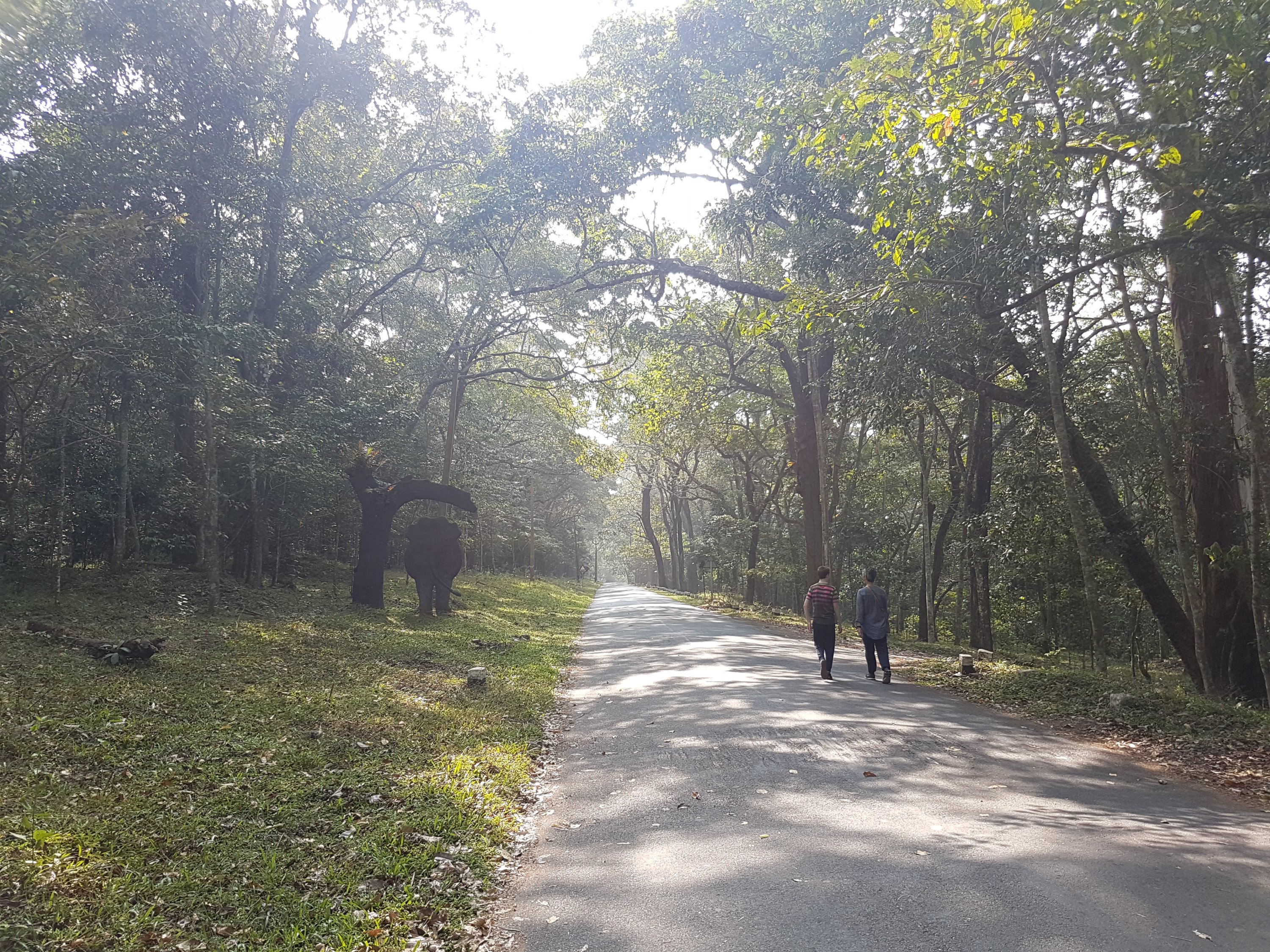
As we walked along the road, passed occasionally by clanking buses full of people staring at us like we were mad, we did see some of the famously timid black langur, perched high up in the trees, and in the quiet between the buses birdsong filled the air. We squinted into the depths of the forests willing an unlikely sighting of boar, bear, tigers or elephants, aware in some stupid way that they were out there, even if it was twenty or thirty miles away. It was a lovely reminder of the world beyond cars, scooters and buses but felt tantalisingly just out of reach.
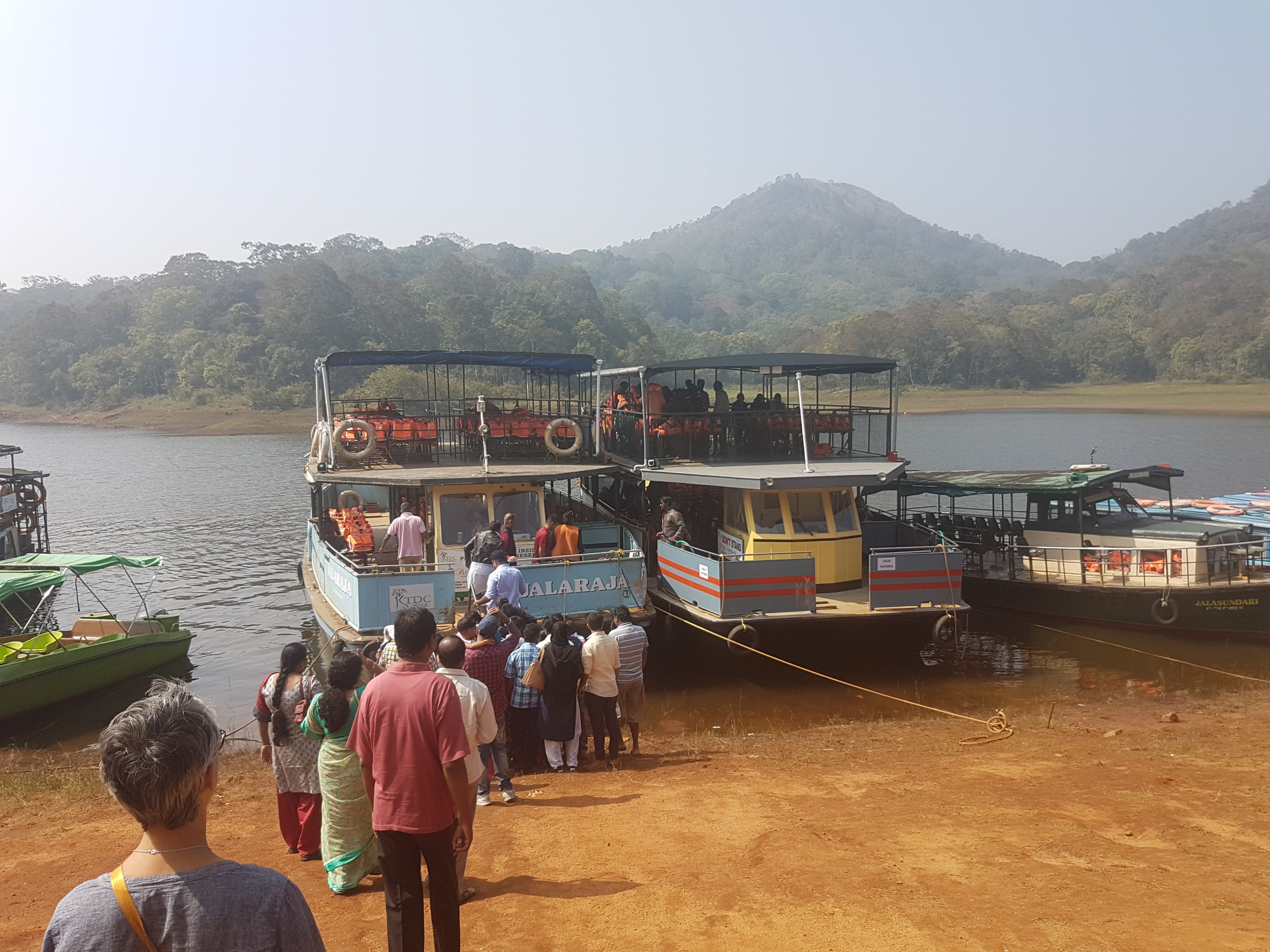
As we approached the jetty area, the scale of Periyar began to take shape. Hundreds of people waited for the eleven thirty sailing, we joined the queueing and form filling rank and file, once at the counter requesting seats on the upper deck, and then mooched about, avoiding the troublesome bonnet macaques, waiting for the flotilla of five boats to return. Despite every ticket being strictly allocated a numbered seat, as soon as the boats docked and started to disgorge their passengers, a frantic press built up at the ticket gate.

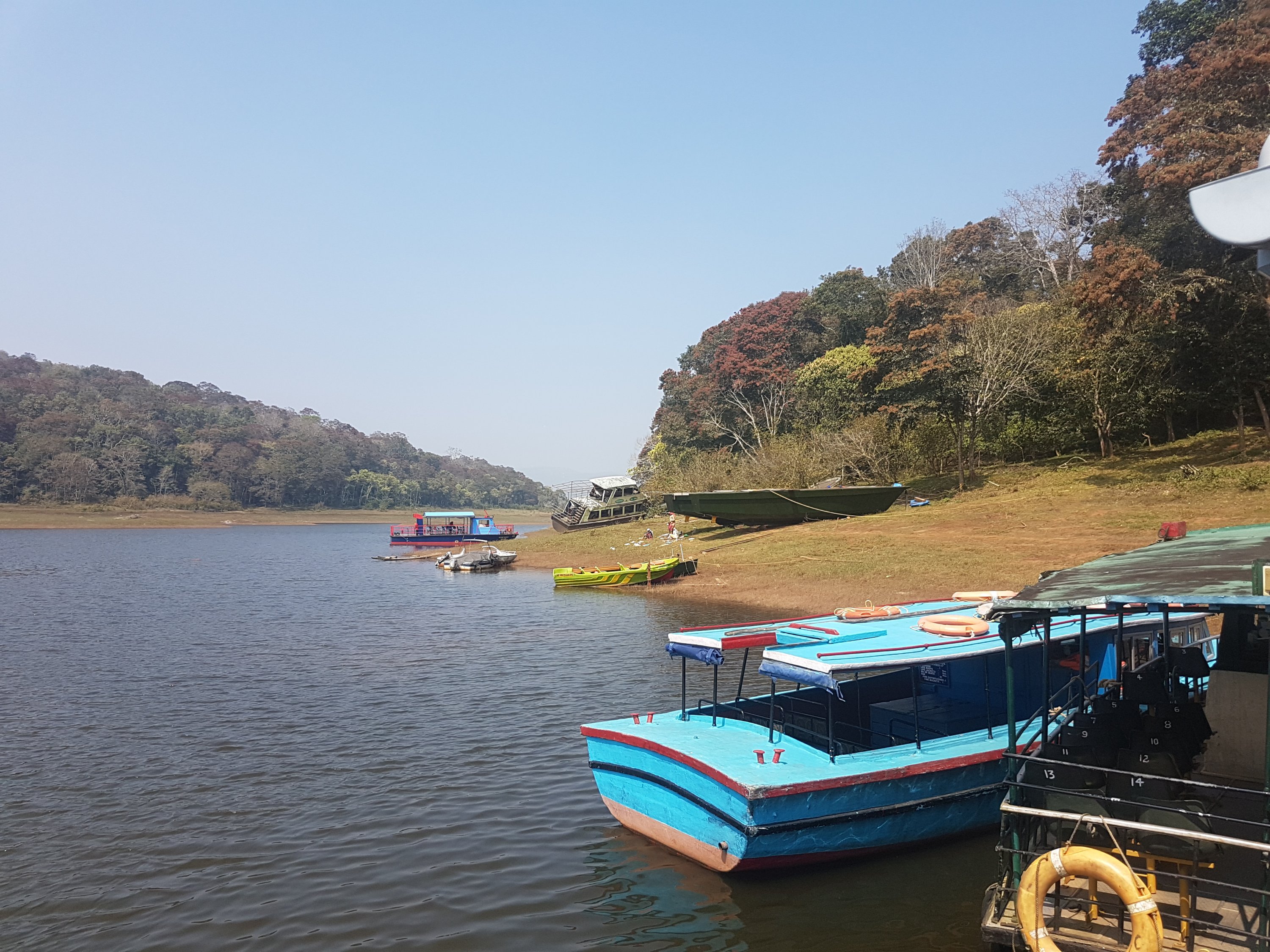
Periyar lake was created in 1890 by the construction of a dam, with the intention of supplying water, via a channel, to the much drier eastern plains towards Madurai. An ancient Maharajah leased the soon to be submerged forests for a peppercorn rent. The lake is in Kerala, the dam is managed by Tamil Nadu. The dam is old, its potential failure catastrophic, Kochi would be washed away. Tamil Nadu desperately needs the water, but doesn’t want to pay anymore for repairs than it has to. Enter the lawyers…
Once the press died down, we made our way down to the shore, climbed through one boat to get on to ours, found our seats and donned a newish and really bulky lifejacket. On a distant shore we could see some spotted deer. Everyone seemed excited. A member of the crew came round checking lifejackets. He barked that wearing these, remaining seated and silence were necessary. A respectful calm descended as our boat and four others headed out onto the lake, throbbing their dieselly way between the staffs of dead trees that emerged out of the deep. We saw a boar, a pair of turtles sunning themselves on a rock, a gaur, the hyper steroidal Indian bison, half hidden in the shadows, some magnificent eagles picking at the carcus of a deer and many cormorants perched on the dead trees in the water, wings opened like matadors readying their capes for bulls. But no elephants, wait, there in the distance, yes that tiny speck, which is actually huge, yes that’s an elephant.
The lake is shaped like a reversed pound sign, albeit one drawn by someone on a rickety bus, and the jetty is located at the extreme end of the foot. After forty five minutes we’d navigated about half way along this foot. The views were stunning; grassy shoreline giving way to trees, slopes rising to hills, hills sometimes sparsely covered stretching away in all directions. The lake is small in relation to the park, which itself is roughly half the size of the Lake District. The sense of an immense world out there full of immense life was palpable. As the boat came in sight of its moorings, the spell of quiet was broken and lifejackets were removed, seats abandoned and selfies taken against the backdrop of the great forest.
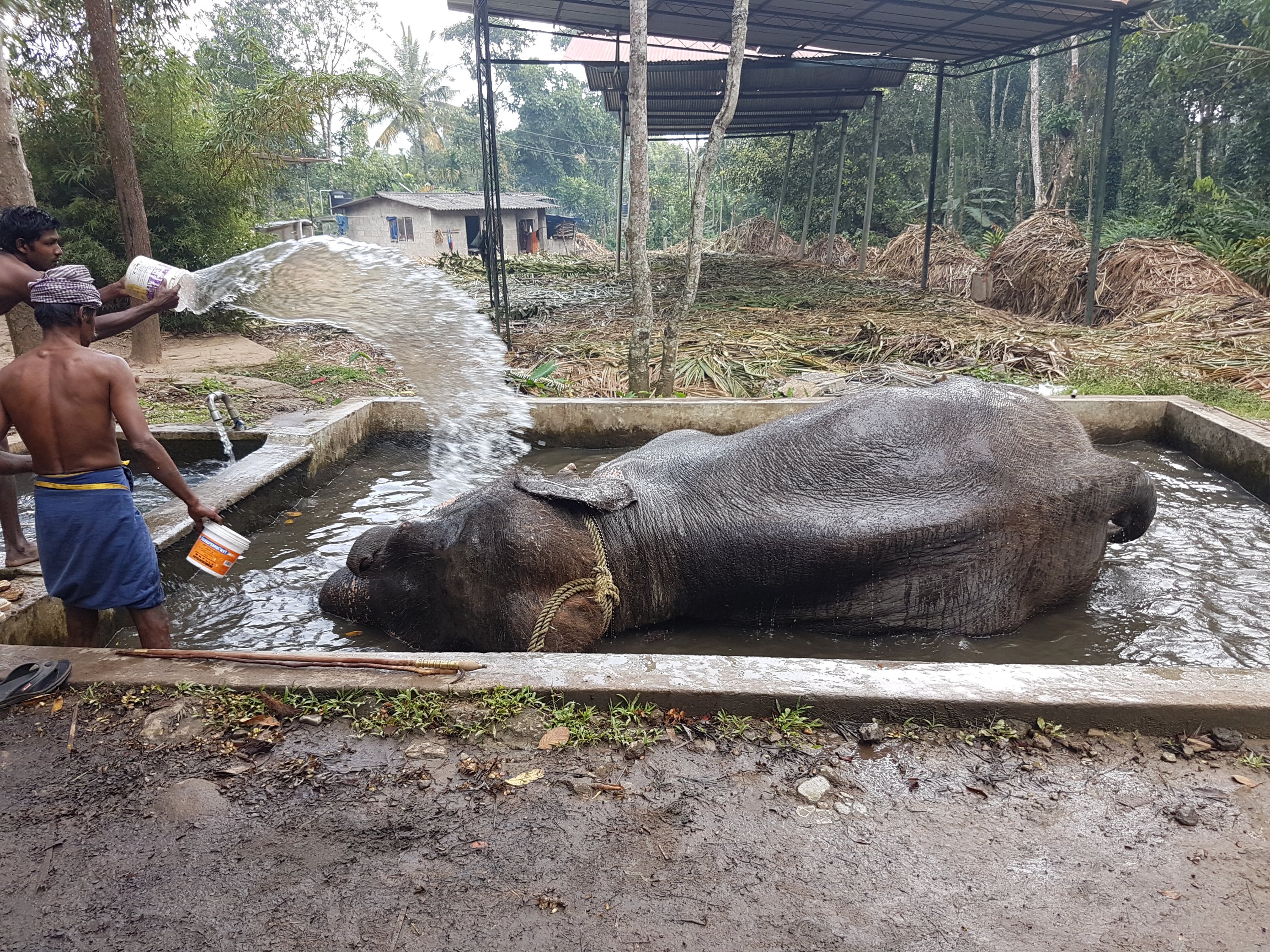
That afternoon, our apetites whetted, we booked ourselves onto a 7a.m. three hour guided greenwalk, satisfied that just to be in the forest would be enough. And that evening I began to take a first few steps in understanding the role of a reserve, particularly one with mega-fauna, of the contradictory nature of conservation, and how to make it pay, and finally in understanding the dangers that hapless tourists face. For my first course I found out about the boat accident that had occurred on the lake five years ago resulting in the deaths of forty five people. More people than seats, no enforced lifejacket use, and everybody rushing to one side to see an elephant in the distance, equals capsized boat and disaster. My main course was from four years ago, when two tourists on a guided tour were trampled to death by an elephant. Then, as a side dish, I started to read about the numbers of elephant related deaths in India, and finally for dessert I watched temple elephants go on the rampage. One video of an enraged elephant flinging a scooter into the air and then crushing, at the second attempt, a crash helmet with its foot – it looked like squashing a rice crispie with your thumb – made me understand what it might mean to be trampled. By this point we had indulged ourselves in an elephant ride (plenty happens at these), admired the giant, graceful and lumbering forms, looked into their eyes, tried not to notice the chains around their ankles or the barked instructions of the handlers, but we’d survived that. Burdened with all this knowledge, I kept quiet.
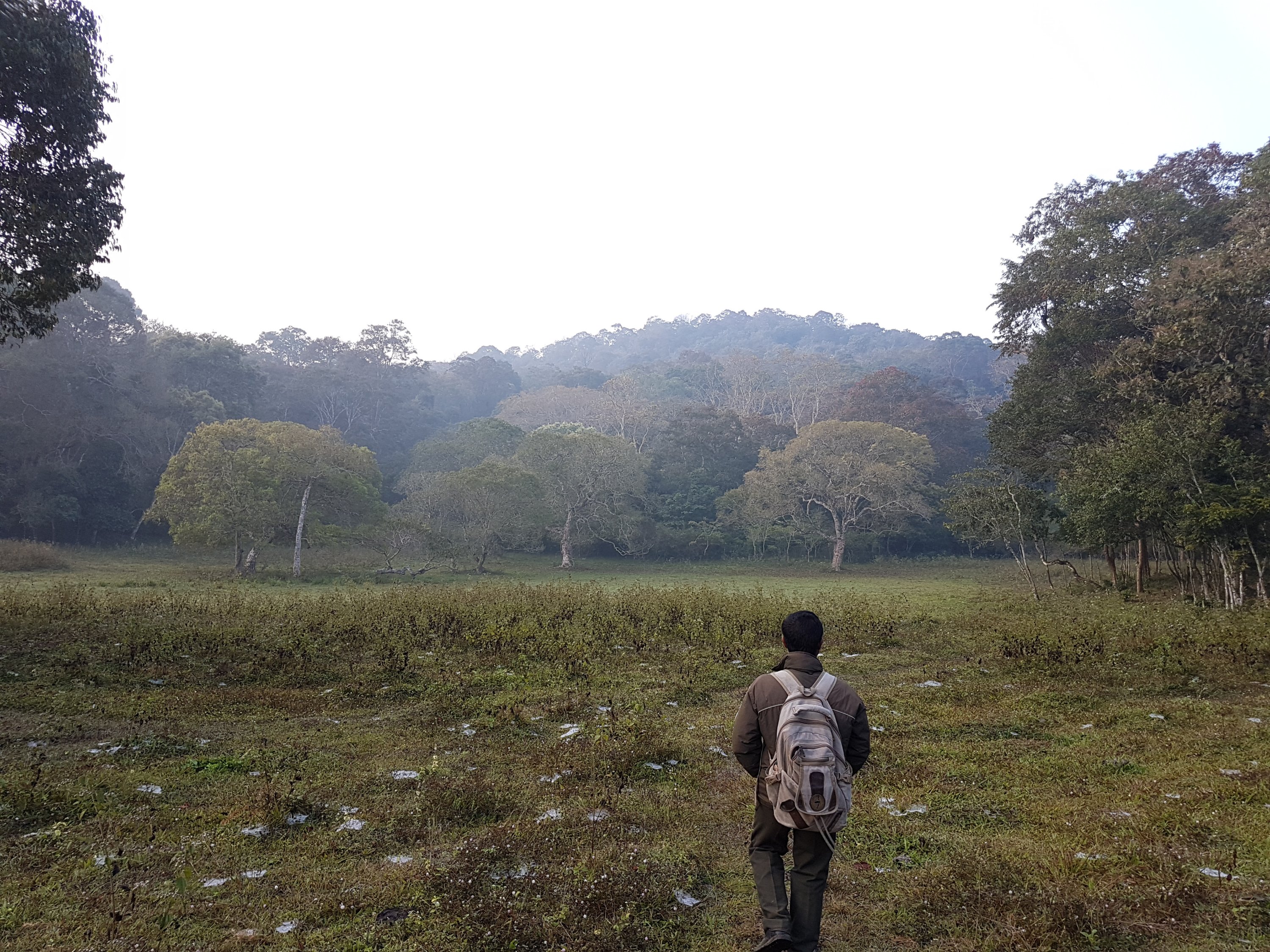
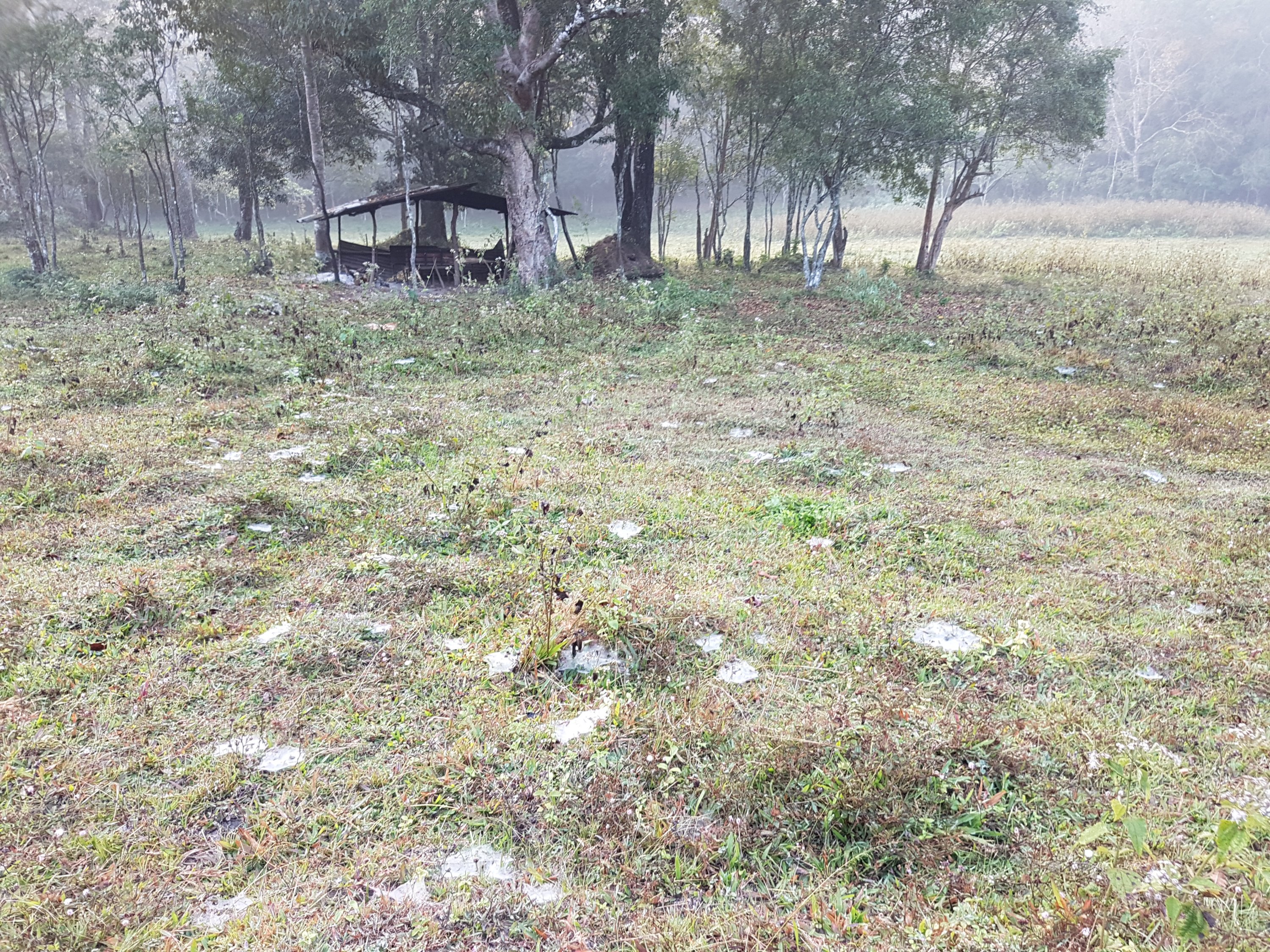
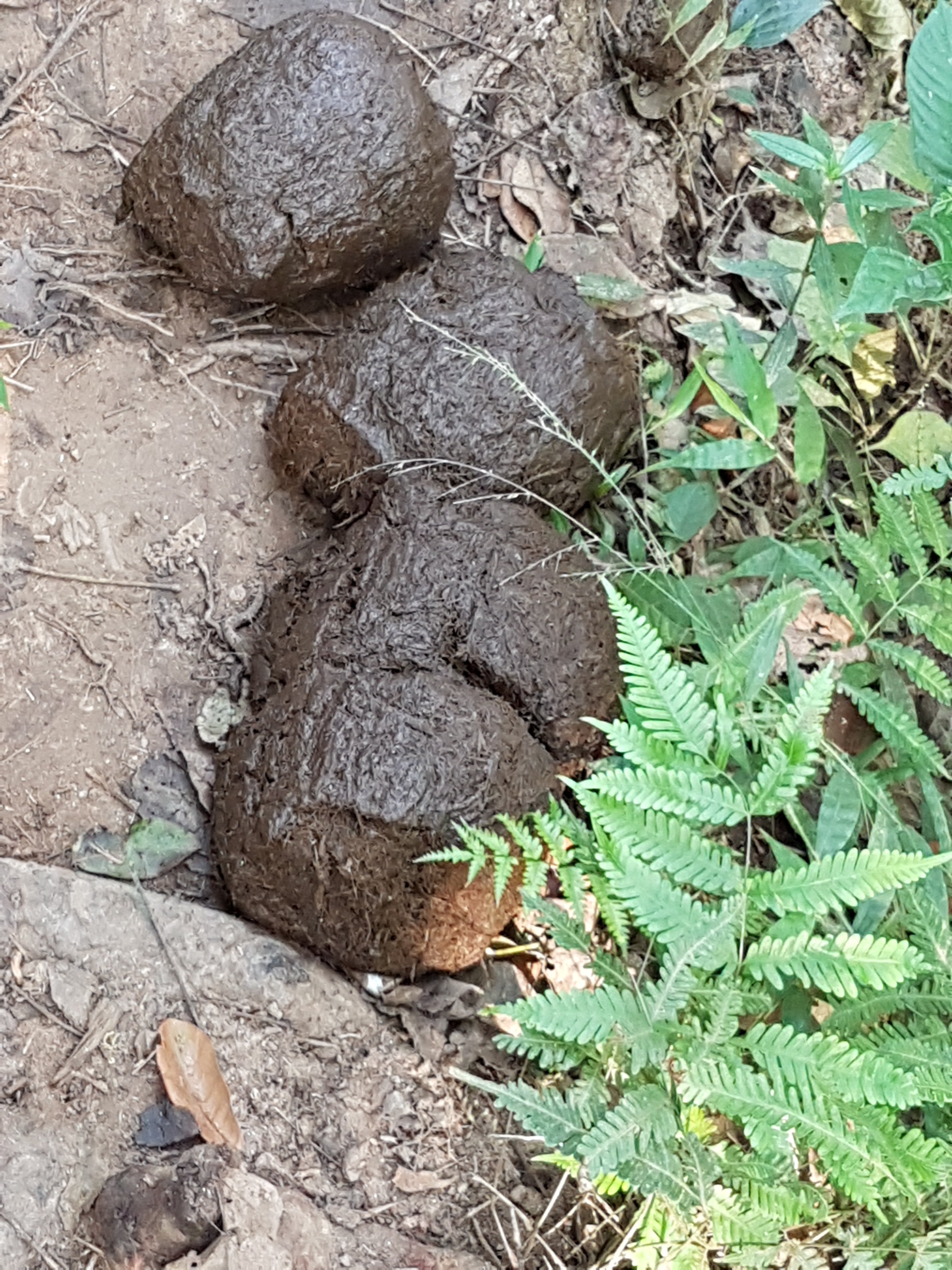
Our guide was very small, so I felt huge, cumbersome and clumsy. For the duration of the walk not once did he look at his feet, regardless of the terrain – slopes, tracks, rocks, stones across a stream, his eyes were always scanning the trees, the undergrowth, everywhere a fifty metre radius from our route. He pointed out four hundred year old rosewoods, a stand of the teaks that give Thekaddy forest its name, a grove of sandalwood. We passed marsh and bog, crossed streams, climbed small slopes, suddenly deep defiles fell away beneath us, he stopped, walked up into some shrubbery, looked around and said ‘elephants were here yesterday’. Ten minutes later we came across fresh dung, the size of newly minted cannon balls. He kept stopping, pausing, pointing out some spotted deer, there, only twenty feet away, but almost invisible, and as soon as they knew of us, impossibly still. Then we joined a track, and thirty yards away, amidst a persistent savage tearing of greenery, we could make out the great grey bulk of an elephant. Our guide led us away and up the track for twenty metres. My new found expertise equated this with good – -elephants are very fast, except uphill. Again he paused, beckoning us to join him, looking down into a thicket of young green vegetation. There we could see an adult, one juvenile and one little one, tearing, chomping their way through tender green leaves and stems. I have some terrible photos of indistinct grey forms merging against the green. We stood and watched.
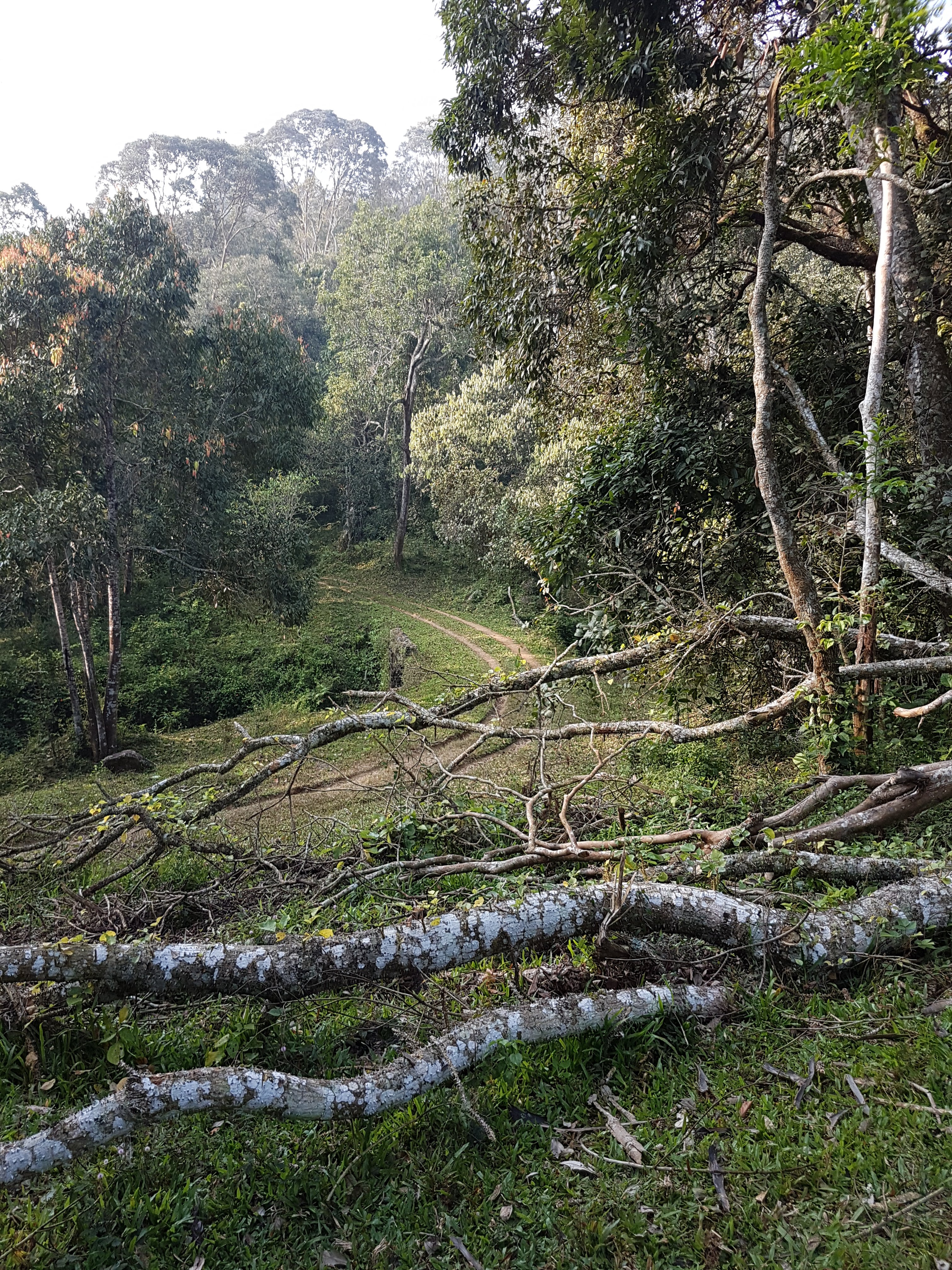

Soon we were joined by a larger group – the half day bamboo rafting crew: ten tourists, two guides and a very nervous man with a rifle, which he immediately readied for action. Our guide, Raj, clearly had the respect of his colleagues – he took my camera and carefully approached the elephants as they emerged onto the track beneath us; any photo resembling an elephant was taken by him.
As we returned, making our way through what at times seemed like Kentish summer woodland, he still scanned our surroundings and paused to point out a giant squirrel, imagine an otter with a bushy tail high overhead, a hornbill that was surely an extra in Jurassic Park, the sound of its wings like a sail beating against its rigging, and an owl in a darkened hollow thirty feet up a tree. His knowledge and skill were a privilege to be around. We were glad we hadn’t chosen to wander ad hoc along a tempting sylvan glade, understanding perhaps a little better the difference between the perils of the English countryside and its tropical counterpart.
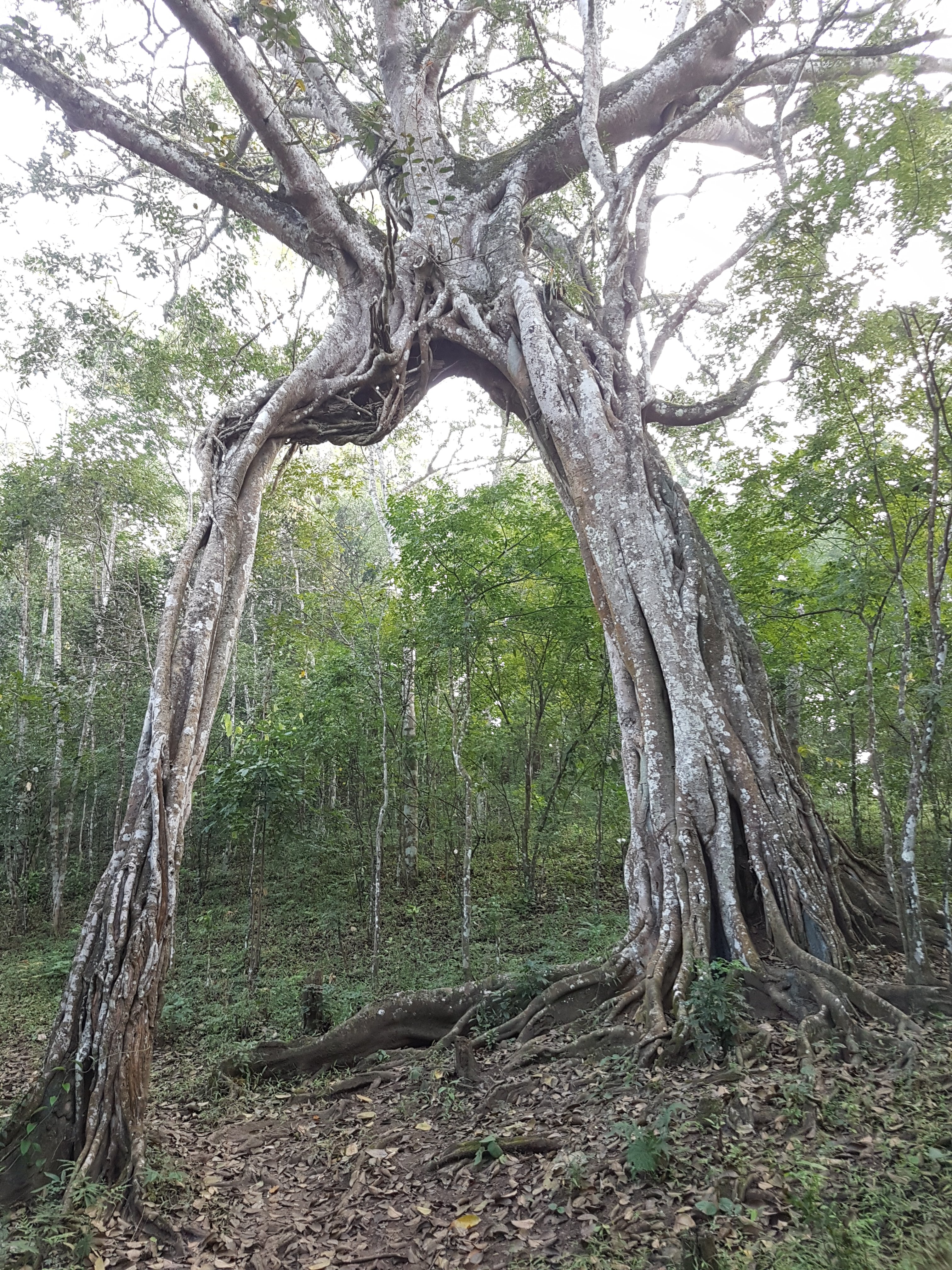
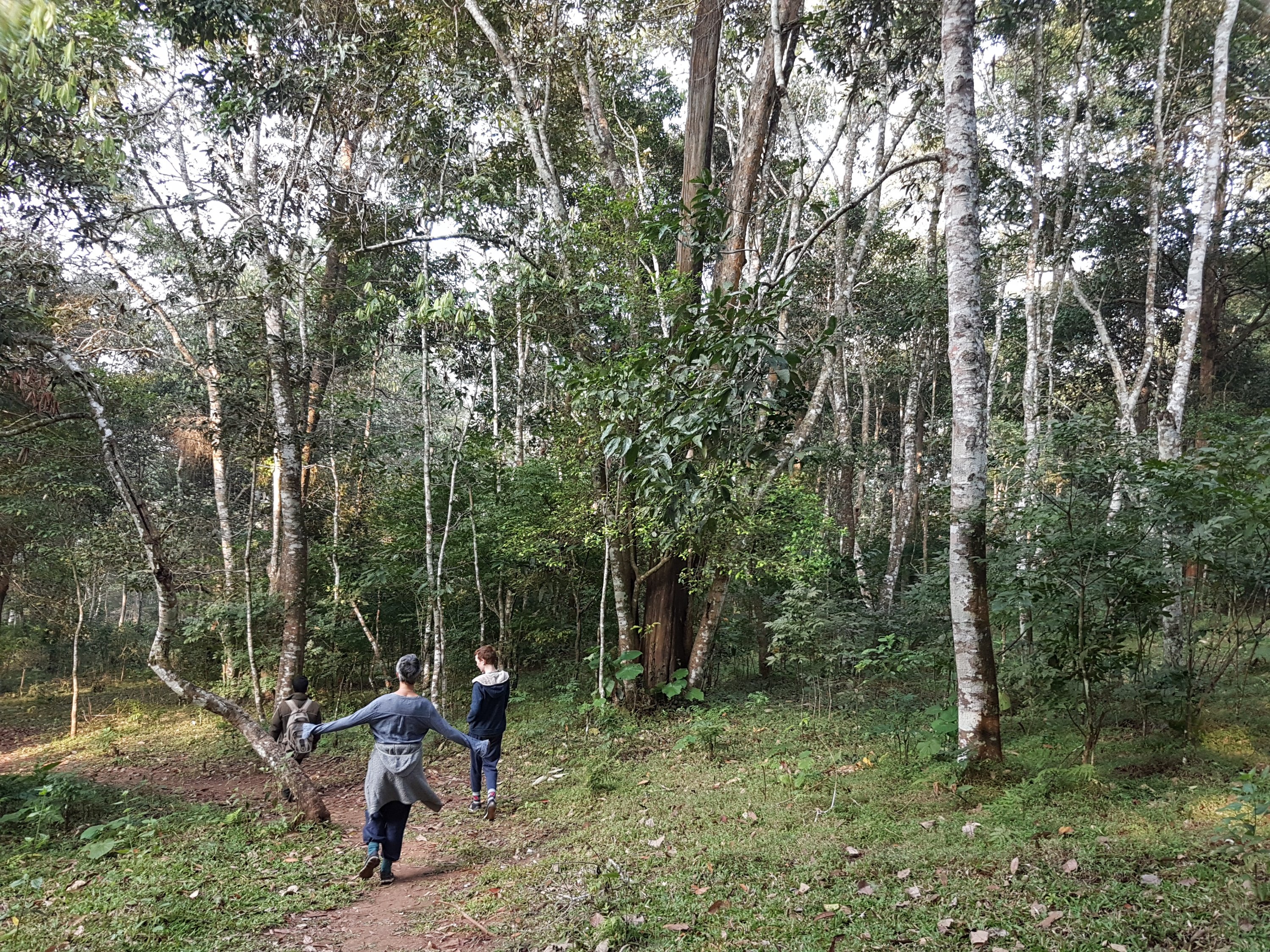
To see beasts up close means you’re either wealthy or poor, lucky or not. The word ‘encounter’, in Indian English, usually refers to the deaths of criminals as a result of police action. Perhaps the beasts know this, and they police us.



